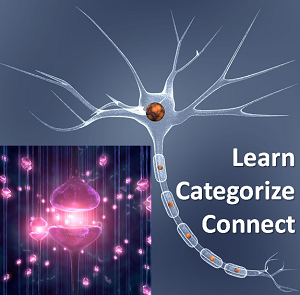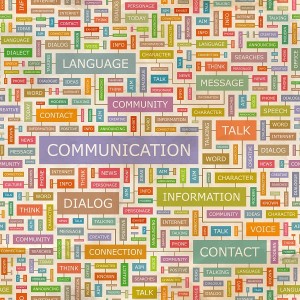25 Jan Pure Democracy: a New World Disorder
 Joe Roushar – January 2023
Joe Roushar – January 2023
What are You Talking About?
Is pure democracy possible in human society? Introducing everyone to a truly democratic society would put them on the same footing – provide a kind of equality and shared opportunity that philosophers have envisioned for millennia. Yet experience has shown us that some delegated decision making bodies such as in a “Republic” are needed to prevent chaos in societies. So let’s leave politics aside and concentrate on intellectual freedom. Emerging AI techniques make the democratization of knowledge possible.
Estimates of the number of languages spoken today on Earth range from 3,500 to over 7,000, but the number is dropping rapidly. Some are spoken by only a handful and others by hundreds of millions. Fewer than two hundred are digitized, meaning, if knowledge is ever to be shared with every nation, kindred, tongue and people (biblical prophesy) we need a different approach than ever seen before: we need an advanced AI to make the body of human knowledge accessible to underserved populations – and to make their knowledge available to anyone.
In this post, I will explain how democratization of knowledge can be achieved in a world with thousands of languages, many not written, and even fewer digitized.
Understanding Context Cross-Reference: Links to other posts and glossary/bibliography references
|
|
|
Scope of the Problem
Most people on Earth have received only marginal benefits from the information revolution. But those who do not understand one of the languages in which the vast majority of the body of human knowledge is published – there is no benefit at all. From a UIA report: “The majority of the 3,500 languages and dialects in the world, some 3,000 in fact, are unwritten. Mexican Indians have over 100 unwritten languages and dialects for example, and India has over 1,000.” The UIA report goes on to assert that “Only 300 [languages] are estimated to have a secure future.” Should we care about the death of a language?
“A UNEP report in 1999 indicated that of the estimated 5,000 to 7,000 languages spoken around the world, nearly 2,500 are in danger of immediate extinction. An even higher number are losing the ecological contexts that keep them as vibrant languages. UNESCO estimated that 4,000 to 5,000 of these languages are spoken by indigenous peoples.” (UIA report) A study by the Massachusetts Institute of Technology estimates that 3,000 of the worlds 6,000 languages are doomed because no children speak them. Africa alone has 1,800 languages, Indonesia 672, and New Guinea 800.
There are two sides to this problem:
- People who cannot understand physically and digitally published content can only get it through word of mouth, limiting or crippling the curious among them
- Many speakers of obscure languages cannot contribute to the body of knowledge despite the probability that many could make significant contributions
The specific case that has long intrigued me is herb lore. Indonesia, New Guinea, Africa and the Amazon have healing plants that indigenous peoples have understood for centuries, and the rest of us remain clueless. Many of the best therapies originally come from plants. We don’t know if good therapies for cancer or cytokine storm may be just beyond our reach because of linguistic barriers.
Solution: AI that can learn unwritten languages, and translate them could solve both sides of the problem
The emergence of advanced AI solutions should give us hope that this capability may not be far off. But not all AI technologies are created equal. Consider Generative Pretrained Transformers (GPT) and Large Language Models (LLM).
LeewayHertz explains that “A GPT model is an artificial neural network that uses a transformer architecture to generate human-like text. As a result of its extensive training in textual material, it can produce new content that is both contextually relevant and cohesive. GPT models are widely used in natural language processing (NLP) tasks such as text completion, question answering and language translation.” This reliance on digitized “textual material” limits GPT models to languages with extensive digital content. A different model is needed. We call the ideal model DLU or Deep Language Understanding.
Form vs. Content
A key problem with GPT is that it is wholly focused on the symbols or form of language and not on its meaning or content. Ferdinand de Saussure (1857 – 1913), the Swiss linguist whose work served as a foundation for the science of linguistics in the twentieth century, showed that every word consists of two parts, the signifier or the structural form of the word, and the signified or the conceptual form.
In this blog I have tried to show how the signified is most critical for understanding, and that understanding can be achieved, in some measure, using computer software. In this post, and my next few, I would like to suggest that we are at the threshold of a new world disorder (or intellectual democracy). But how is this possible? It is possible with Deep Language understanding. Instead of learning like a baby (Forward and Back Propagation as in GPT – check out Temi Babs) more complex, but less computationally intensive algorithms can do the heavy lifting.
GPT uses a Transformer to generate a Large Language Model or LLM
- Its Neural Network learns like an infant:
- Takes in massive amounts of stimuli
- Learns patterns
- But unlike an infant, it never forgets
 DLU learns like a college student: Apperceptively
DLU learns like a college student: Apperceptively
- Its Bayesian DLU network reads, learns and never forgets
Apperceptive learning is self-conscious because it builds new knowledge on the foundation of existing knowledge associatively, and it can unlearn faulty information. Unlike Neural networks that go through an intensive pre-training regimen that ends before use begins, apperceptive learning can occur at any time including while it’s being used. It can constantly get smarter.
noun ap·per·cep·tion ˌa-pər-ˈsep-shən (Merriam Webster Dictionary)
| Click below to look in each Understanding Context section |
|---|











